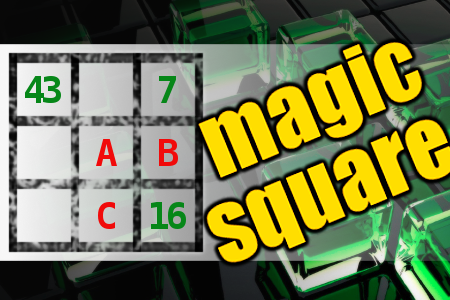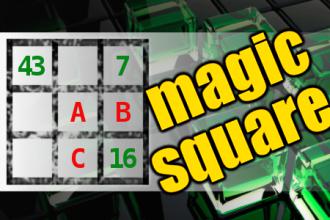MAGIC SQUARE: Calculate A+B+C
The aim is to place the some numbers from the list (5, 7, 9, 12, 14, 16, 39, 41, 43, 60, 71, 82) into the empty squares and squares marked with A, B an C. Sum of each row and column should be equal. All the numbers of the magic square must be different. Find values for A, B, and C. Solution is A+B+C.Correct answers: 48
The first user who solved this task is On On Lunarbasil.
#brainteasers #math #magicsquare

A Guy was staying in a fancy h...
A Guy was staying in a fancy hotel and was enjoying the pool when the manager told him quite bluntly to get out. When asked for the reason, the manager said, "Because you peed in the pool."
"Well," replied the swimmer, "lots of people do that."
"True," answered the manager, "but you did it from the diving board."
"Well," replied the swimmer, "lots of people do that."
"True," answered the manager, "but you did it from the diving board."

